- Home
- Stephen Baxter
Phase Space Page 17
Phase Space Read online
Page 17
Joel is one of the field-trip kids. Through him I learn that his family, of farmers, have been badly affected. They blame the government, the kids. Even Joel himself, says the poor child. I wonder what is happening in his home, away from official eyes.
I am staying with the kids as much as I can. But my situation is difficult. I am delighted with our baby boy, and I think we are both secretly relieved that he is ‘normal’. But Emma is scared and thinks we should be planning to get as far from here as possible.
My conflict of loyalties deepens.
‘When the desiccation came, evolution slowed to a crawl. Life was forced to be thrifty, to evolve towards simplicity, robustness and cooperation. Any fancy multicellular design became a liability. Great communities emerged with a new kind of distributed complexity, with simple, interchangeable components …’
‘Instead of people, slime.’
‘You got it. But it had to happen fast. On an evolutionary timescale anyhow … Look, I can’t tell this story right. There is nothing conscious about the direction of evolution, nothing purposeful. But there was something in the genes, something that found itself activated when the conditions were right, when the stress got too great. Something that shut down what could no longer survive the desiccation.’
‘Something?’
‘We think we understand the mechanism,’ Lyall said darkly. ‘Bob, your DNA isn’t a seamless piece of genetic machinery. Your genes contain endogenous retroviruses – ERVs.’
‘Retroviruses – like HIV?’
‘That’s right. ERVs were once independent life forms – viruses that invaded the cells of our ancestors millions of years ago. But ERVs liked it so much they decided to stay. They have become integrated into the human genome, reproduced and passed down through the generations. This has been going on for at least thirty million years: maybe one per cent of your genome is represented by ERVs and fragments. And every mammal species we’ve examined contains ERVs too.
‘Cohabitation makes the viruses settle down: it’s a poor parasite that destroys its host. But sometimes the tamed viruses turn feral again. Retroviruses seem to be responsible for autoimmune diseases: when they kick in it’s like your body is mounting an immune attack against your own cells. And that’s not all they can do. In certain circumstances, it seems, they can stop the replication of DNA molecules altogether …’ Lyall shrugged. ‘Look, kid, I’m a propulsion engineer – not even a rock hound, and still less a microbiologist. But what I do understand –’
‘The Martian Reboot was caused by ERVs.’
She nodded grimly. ‘Or something like them. The evidence is iffy – it’s been a long time – but that’s how it looks.’
Bob struggled to understand what she was telling him. ‘Was it an ERV on Earth too?’
‘Yes.’ She watched him, letting it figure it out for himself.
‘Oh,’ he said. ‘The same ERV.’
‘The same ERV.’
August 2008
Now the plants are dying in earnest – wheat, grasses, weeds. In the very centre, close to Corwell itself, only single-celled organisms are reproducing, the very root of the evolutionary tree. Merrick has followed this grim progression with my classroom tree-of-life diagram, step by step.
There is growing hostility to the children.
It is a hot August, and tempers are inflamed.
It comes to a head.
Some of the locals mount a drunken attack. The soldiers on guard are hesitant, their sympathies split, their orders unclear. Stewart, Merrick, Emma and myself rush to defend the children. Joel’s father, drunk and in despair, improvises a petrol bomb and throws it. His own child is his target.
I have never held a lower opinion of the human species. With a possibly terminal catastrophe gathering around us, all we can do is seek someone to blame, and to harass the innocent and helpless. Perhaps we do not deserve to survive.
The children are saved from the fire.
Emma is killed.
I don’t know how else to tell such a thing.
She stood there, the lower half of her suit stained bright red by the dust, gazing up at Earth. ‘Earth doesn’t have to die,’ she said. ‘That’s the point. Earth isn’t freezing and drying like ancient Mars. I think that damn ERV got triggered by accident. It was the pressures of that one shithole place in England, the mix of ground toxins and atmospheric pollution and whatever the hell else was going on there. Our fault, sure – but an accident all the same. It isn’t Earth’s time.’
Bob, still resentful, was growing frightened of this eighty-year-old, and the huge biological disaster that lay behind her, a billion-year shadow. ‘Why doesn’t Earth do something about it?’
She sighed. ‘Because there is no “Earth”. There are only factions and nations and corporations … For a time, even as the disaster unfolded, we were hopeful. We even mounted missions to Mars, for God’s sake. I guess we always thought we’d defeat the plague. But we didn’t. Hope died. Now there are enclaves, fortresses. And you can’t do science from inside a fortress.
‘Listen to me. You are Mars’s last child. On Earth you will be a sentimental token, a five-minute wonder. You will have a platform. You have to use it.’ She closed her hand around his, around the rock. ‘Make them listen. Drag them out of their fortresses, their cowering madness. Read the letter. Make them put together the lessons of this ancient rock, and what’s going on all around them. We learned more from the first scraping of Martian bugs than in fifty years of one-planet biology, and I believe it can be so again. In a way it’s beautiful – the ancient life of one abandoned world coming to the aid of its suffering sister … Make them see that.’ She searched his face anxiously. ‘Do you understand?’
Bob opened his palm. In the slowly fading light he stared at the innocent bit of rock, longing to see the creatures who had once swum vanished Martian seas.
September 2008
Merrick, my dead wife’s lover, has stayed with us. Emma’s death has drawn us together.
Merrick’s counsel is oddly reassuring, in an abstract way. He says that essentially a ‘reboot’ mechanism is operating. Just as a crashed computer can be restored from reboot files, so the biosphere, stressed beyond endurance, is ‘dumping’ higher biological forms, abandoning all but the most basic forms of life, perhaps in the hope of re-evolving to suit the new conditions. Merrick speculates that this mechanism may have operated before, after the great extinction events of the past.
This all seems a little spooky to me; it smacks of Mother Gaia taking revenge. But I know little about the science and I keep my counsel.
The virus is spread by air, water, contact. Merrick hacks into internet sites to find evidence that the virus is already working its effects elsewhere, far from Tricester.
Merrick predicts we have maybe a century left. A hundred years, as humans and other higher forms are discarded like autumn leaves.
I cradle my baby, and wonder how many more like him will be born.
SUN GOD
Apollo drifted between Earth and Moon.
Fifty thousand miles behind Apollo a gibbous Earth loomed, huge and bright. And opposite, a hundred and eighty thousand miles ahead, there hung a tiny crescent Moon, like a Chinese lantern.
The Earth was white. And the Moon was brick red …
… and it was beneath that crimson Moon that I was stationed, as penalty for my heterodoxy, on the surface of the First World: the hell-planet, orbiting less than a solar radius from the surface of the bloated sun itself.
Hell-planet, perhaps. But there was once life here.
We can find traces of complex carbon compounds in the deep, subducted rocks. We can reconstruct how this world’s biosphere must have operated, in the youth of the sun, with rich and complex cycles based (unlike our own ammonia-dependent processes) on the unlikely combination of water, carbon dioxide and oxygen.
Yes – oceans of water!
There was even intelligence here.
Oh, after so
long, after billions of revolutions of this twin world around its sun, no artefact could remain on the surface: no proud symbol of their presence, for every material used to construct vessels or buildings would long since have crumbled to its constituent chemicals. But, nevertheless, in the deeper layers of the old continents, even in the rock subducted beneath desiccated sea beds, we found traces: layers of metals and pollutants – lead and zinc and cadmium – evidence of mining, deep caches of certain isotopes of uranium.
There are even, in places – in the ash from long-dead volcanoes, restored to the surface by tectonic cycles – the remnants of bodies. Artefacts nearby, of gold, platinum and mercury, some ceramics.
Piece by piece we learned much of them: these shambling sacks of water with their unruly, chaotic culture, who so briefly dominated their own planet –
– and, I came to believe, touched the surface of their Moon!
Traces only, granted, and in just six isolated sites, scattered over one hemisphere of that pocked, ancient satellite.
The geological cycle of the First World was my assignment. I was not supposed to be studying the antique intelligence of the First World – still less evidence of voyages to that solitary Moon!
But that – curse my heterodoxy! – is what I discovered.
It was difficult to understand how this could be so. How could water-heavy life be transmitted across such a gulf of space? Even if it did, in some form of spaceborne spore, perhaps, why should it be restricted to those six sites? Why should it not spread over the whole satellite?
It made no sense.
Therefore I formed an outrageous hypothesis.
I suggested that the life traces were carried there by conscious intent. The inhabitants of the First World, at the bright dawn of time, travelled to their satellite, and left marks in its shattered soil.
Well, my hypothesis aroused predictable outrage. I already had a reputation for controversy after my original heterodoxy. There was no sign of the use of advanced propulsion technology on that lonely Moon: fusion, zero-point energy, spacetime inflation. Not even nuclear fission! So how did they get here? With chemical rockets, children’s toys? And they showed no evidence of the global cultural organization which would have made such an endeavour possible; they were squabbling, territorial creatures.
And why just six landing sites?
Six journeys, and then no more? A tide of life, reaching up from the First World to its satellite at those six points, then falling back?
Yes. It was absurd.
I needed more evidence.
In my own time, defying my superiors, I began to seek a way to show how such flights could have been achieved, with appropriate technical and cultural logic: flights from the First World to its battered Moon …
… a Moon which rose like a shard of bone in the blue dome of sky over New Mexico scrub, as Slade walked towards the Flight Operations Control Centre.
The DC-X – also known as Sun God – sat on the flat, baked plain of the White Sands Missile Range. The rocket, swathed in boiling hydrogen, was a misshapen cone, like a stubby, isolated minaret maybe forty feet tall. Heat haze shimmered before it. The craft was visibly battered, dinged-up and scorched, after the multiple test flights it had already taken.
A countdown intoned from a primitive PA system, the terse numbers and technical data echoing away across the sands. The sun was directly in Slade’s eyes, the light on his head, face and chest a tangible presence; it seemed as unfiltered as if he were in space.
Dream on, he thought.
It was June, 1997.
Slade reached the Control Centre, which was just a ten-yard trailer set up three miles from Sun God’s launch pad. He entered and sat in front of a computer screen. Two McDonnell engineers were here waiting for him, with their own consoles and controls. But during the flight phase, Sun God would be Slade’s ship, and that suited him just fine.
The countdown proceeded, calm and controlled. And –
Light burst from the base of the craft, the pure, clear glow of burning hydrogen. All of three miles away, the exhilaration of ignition made Slade’s soul rise. A billow of white smoke blasted sideways, out across the desert surface, stirring the cryogenic clouds, which were soon stained yellow by kicked-up sand.
The conical craft slid smoothly into the air, soon rising above its support structure. When it had risen out of the hydrogen cloud, that clear flame, lengthening, was all but invisible.
Then the rocket ship slowed to a halt, thirty yards above the ground. It was astonishing. Rockets weren’t supposed to do that.
Now the DC-X responded smoothly to its programming, tipping and scooting a few yards back and forth across the desert, moving simply by tilting its four rocket nozzles, directing the thrust. The engineers rattled through their tests.
It looked so easy, Slade thought. But it wasn’t.
The problem with spaceflight was, humans were trapped here, on the surface of the Earth, by the laws of physics. If you were going to use chemical engines to get to orbit from Earth, you needed a ninety per cent mass fraction: ninety per cent of your take-off mass had to be fuel. Back in the sixties, when they first built the Atlas, they could get no better than seventy or eighty per cent.
This little craft, the DC-X, looked good, but its mass fraction was only sixty per cent. It was supposed to pioneer technologies to push up that mass fraction. For this flight it had been given all kinds of fancy modifications, like a new graphite epoxy hydrogen tank, a lox tank made from aluminium-lithium alloy, and an oxygen-hydrogen reaction control system that used excess fuel from the main tanks.
DC-X was a one-third prototype. The full-scale version – a hundred and twenty feet tall, just a little taller than John Glenn’s Mercury-Atlas – would weigh in at five hundred tons, and be capable of carrying two crew to orbit.
But it wouldn’t be piloted. The crew would be passengers, helpless as babies, stuck in the metal belly of the craft.
Well, it probably wouldn’t ever get built. Even if it did, it was so far in the future Slade wouldn’t see it.
But here he was anyhow, flying Sun God back and forth, in little arcs over the desert.
Slade, aged sixty-seven, had been in aviation – specifically, rocket craft – all his life. He was an old lifting-body man. After Patuxent, he flew the old X-15 a couple times. When his buddies were applying to NASA in the sixties, for Mercury, he just wasn’t interested. He wanted to stick with spaceplanes. He figured those dumb ballistic capsules just weren’t the future.
Well, he’d been proven correct. There had been that scare when the Russians had first thrown up their heavy satellites and their cosmonauts, but it was soon obvious that the Soviets’ technical lead was only in heavy-lift boosters. Just one American had flown in orbit – John Glenn, in 1961, in his tin-can Mercury capsule atop an Atlas booster – and then the nation had backed off. And when John Kennedy had called for a decade-long programme to reach the Moon – the Moon, with throwaway boosters and ballistic capsules, for God’s sake – he had been roundly howled down.
America had gone back to Eisenhower’s slow and steady approach. And so, after forty years, the Atlas, steadily upgraded, remained America’s only orbital booster system, with a capacity to orbit of a few tons.
But anyhow Atlas was enough for practical purposes like weather satellites and comsats. You didn’t need anything more powerful, unless you wanted to do something seriously dumb like fly to the Moon! The research had gone on into new technologies, slowly and incrementally.
There was no rush.
And Slade, to his own surprise, had grown old watching it all go by, waiting for a chance to fly.
Of course this wasn’t piloting. The DC-X was completely controlled by the computer. Slade had what the engineers called trajectory command over the bird. He was sending in pre-scripted plays like a gridiron coach, then leaving it to the software to execute the plays.
But that was okay. You didn’t need much imagination to believe yo
u were up there, in the tip of that cone, flying.
Sun God stayed in the air by standing on a rocket flame – just like a lunar lander would have worked – in fact, he thought now, he’d have been more than happy to sit on the nose of that thing and ride it down to the surface of the old Moon itself, with Bado.
– And as he framed that idea, he saw Bado again. In his unwelcome memory that treacherous old X-15 came barrelling out of the sky once more, slamming Bado, his good buddy, into the high Mojave – that soft crump, the almost gentle puff of dust.
Damn, damn. It had always seemed so wrong. Maybe in some other life, he and Bado could really have flown some kind of Mercury capsule down to the surface of the Moon. Maybe that was where his recurring dream came from –
– in which Bado came loping out of a shallow crater, towards Slade, bouncing happily over the sandy surface of the Moon –
– but then there was the other half of his dream, where he was just a kid, toiling in the guts of some huge space rocket factory, forced to speak a guttural European tongue –
Moons and mountains. Recurring dreams. An old geezer thing, evidently.
But the Moon probably would have killed them anyhow. There were scientists who said the mountains there would crumble like meringues if you set foot on them, or the dust itself would explode and swallow you up.
Anyhow, Slade was going to die without ever knowing.
Time to bring her in.
Sun God swept through a smooth arc towards the splash of concrete that was its landing pad. The bird slid down through the last few feet, as smooth as if it was riding a rail down to the ground, and he let the automatics finish the touchdown. Sun God just stuck out its four landing legs and landed on its pad, as gently as a dragonfly settling on a lily.

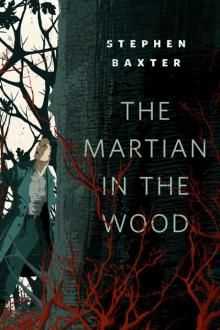 The Martian in the Wood
The Martian in the Wood THE H-BOMB GIRL
THE H-BOMB GIRL World Engine
World Engine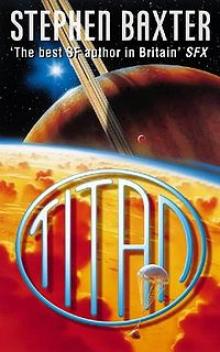 Titan n-2
Titan n-2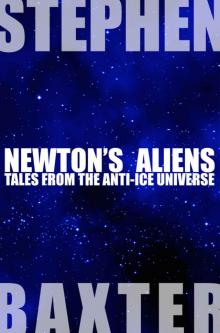 Newton's Aliens: Tales From the Anti-Ice Universe
Newton's Aliens: Tales From the Anti-Ice Universe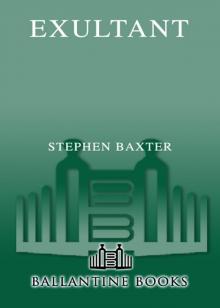 Exultant
Exultant Manifold: Origin
Manifold: Origin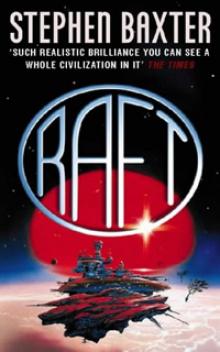 Raft xs-1
Raft xs-1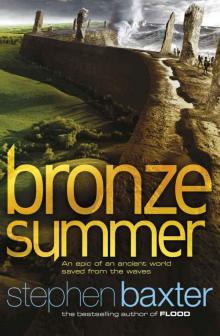 Bronze Summer n-2
Bronze Summer n-2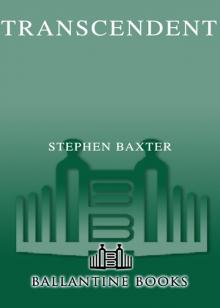 Transcendent
Transcendent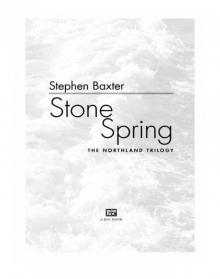 Stone Spring
Stone Spring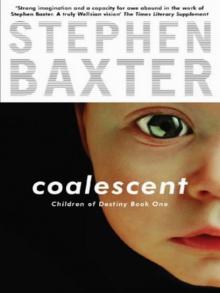 Coalescent
Coalescent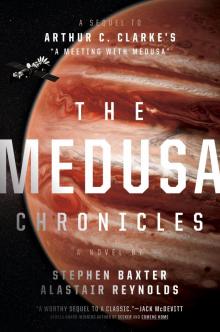 The Medusa Chronicles
The Medusa Chronicles Origin m-3
Origin m-3 Silverhair tm-1
Silverhair tm-1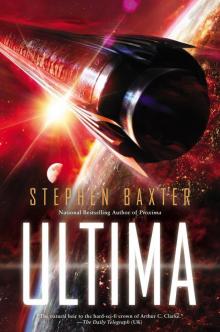 Ultima
Ultima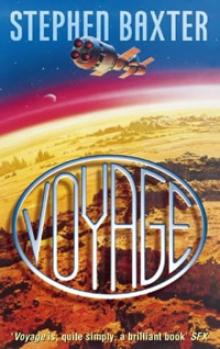 Voyage n-1
Voyage n-1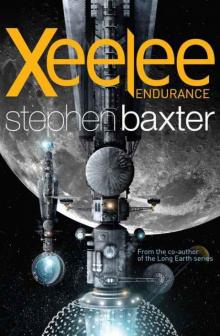 Xeelee: Endurance
Xeelee: Endurance Space m-2
Space m-2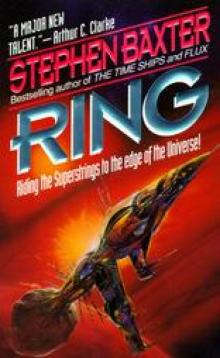 Ring xs-4
Ring xs-4 Raft
Raft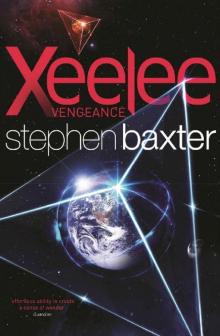 Xeelee: Vengeance
Xeelee: Vengeance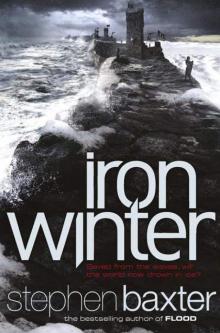 Iron Winter n-3
Iron Winter n-3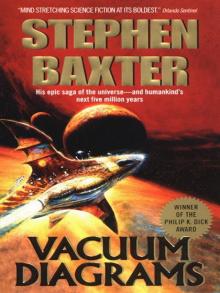 Vacuum Diagrams
Vacuum Diagrams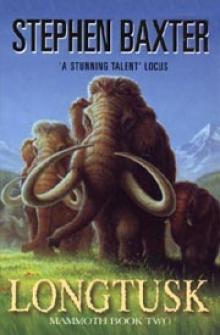 Longtusk tm-2
Longtusk tm-2 Proxima
Proxima Evolution
Evolution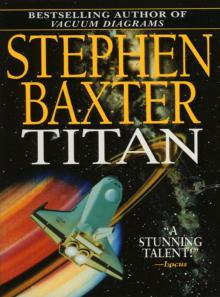 Titan
Titan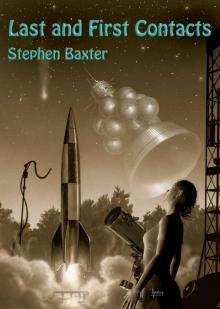 Last and First Contacts (Imaginings)
Last and First Contacts (Imaginings)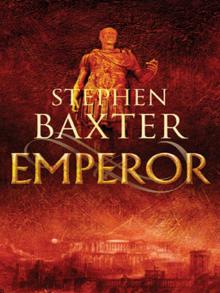 Emperor
Emperor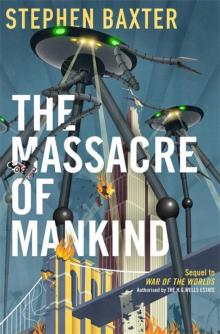 The Massacre of Mankind
The Massacre of Mankind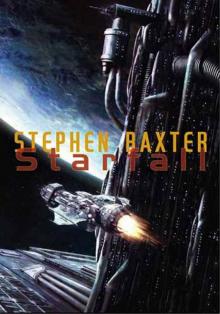 Starfall
Starfall Doctor Who - The Wheel of Ice
Doctor Who - The Wheel of Ice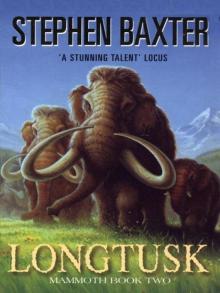 Longtusk
Longtusk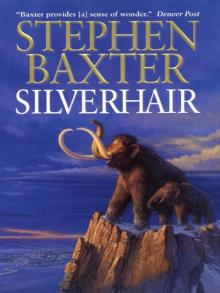 Silverhair
Silverhair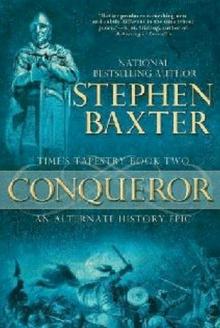 Conqueror tt-2
Conqueror tt-2 Flood
Flood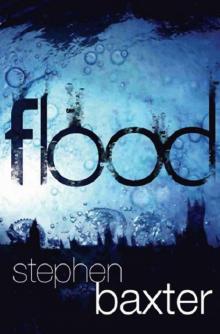 Flood f-1
Flood f-1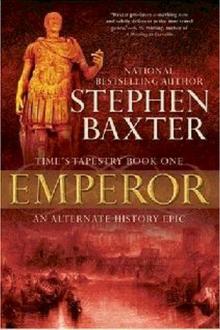 Emperor tt-1
Emperor tt-1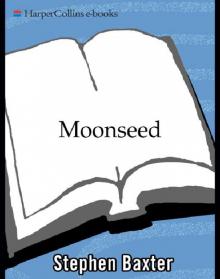 Moonseed
Moonseed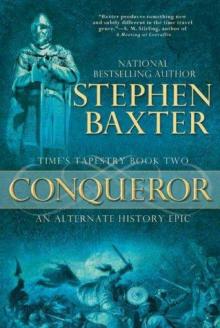 Conqueror
Conqueror Timelike Infinity xs-2
Timelike Infinity xs-2 The Ghost Pit
The Ghost Pit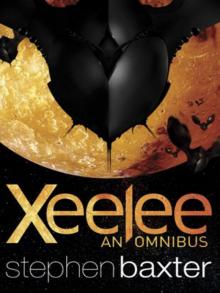 Xeelee: An Omnibus: Raft, Timelike Infinity, Flux, Ring
Xeelee: An Omnibus: Raft, Timelike Infinity, Flux, Ring Weaver tt-4
Weaver tt-4 Landfall: Tales From the Flood/Ark Universe
Landfall: Tales From the Flood/Ark Universe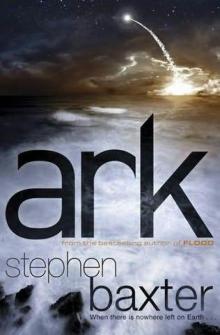 Ark
Ark Emperor: Time’s Tapestry Book One
Emperor: Time’s Tapestry Book One Space
Space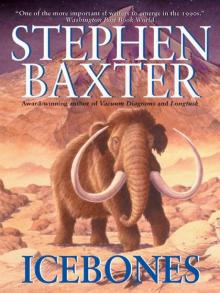 Icebones
Icebones Manifold: Space
Manifold: Space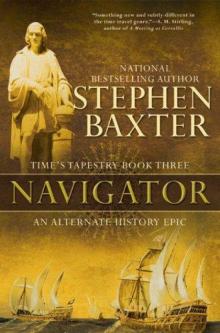 Navigator
Navigator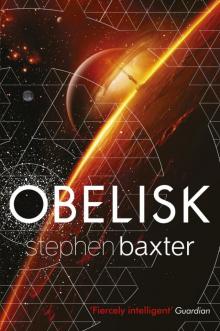 Obelisk
Obelisk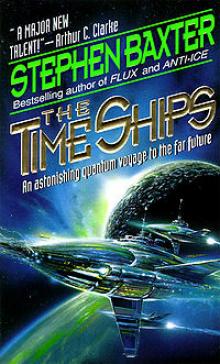 The Time Ships
The Time Ships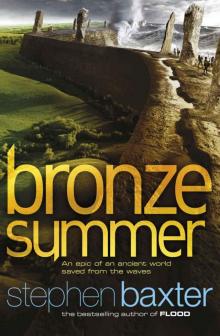 Bronze Summer
Bronze Summer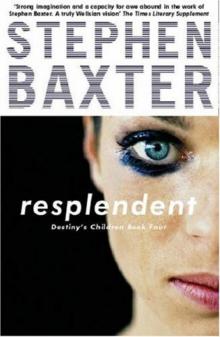 Resplendent
Resplendent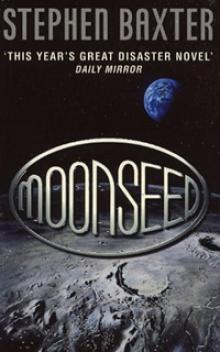 Moonseed n-3
Moonseed n-3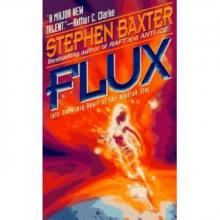 Flux xs-3
Flux xs-3 Transcendent dc-3
Transcendent dc-3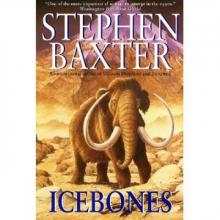 Icebones tm-3
Icebones tm-3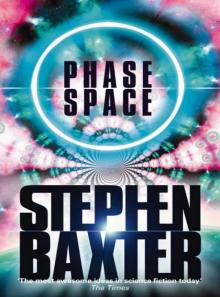 Phase Space
Phase Space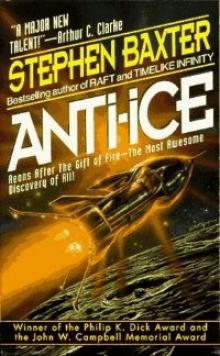 Anti-Ice
Anti-Ice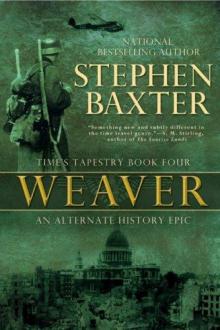 Weaver
Weaver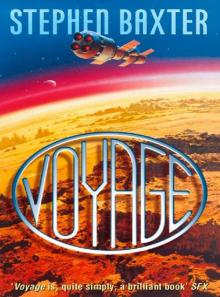 Voyage
Voyage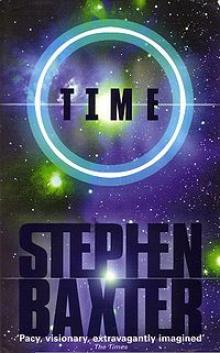 Time m-1
Time m-1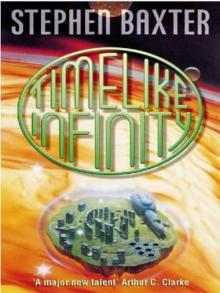 Timelike Infinity
Timelike Infinity Exultant dc-2
Exultant dc-2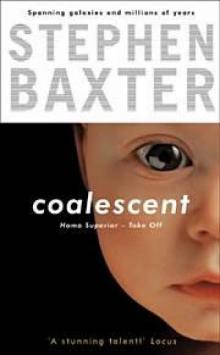 Coalescent dc-1
Coalescent dc-1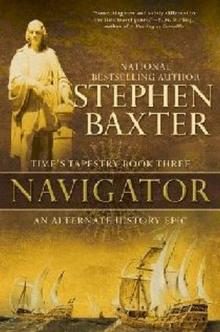 Navigator tt-3
Navigator tt-3